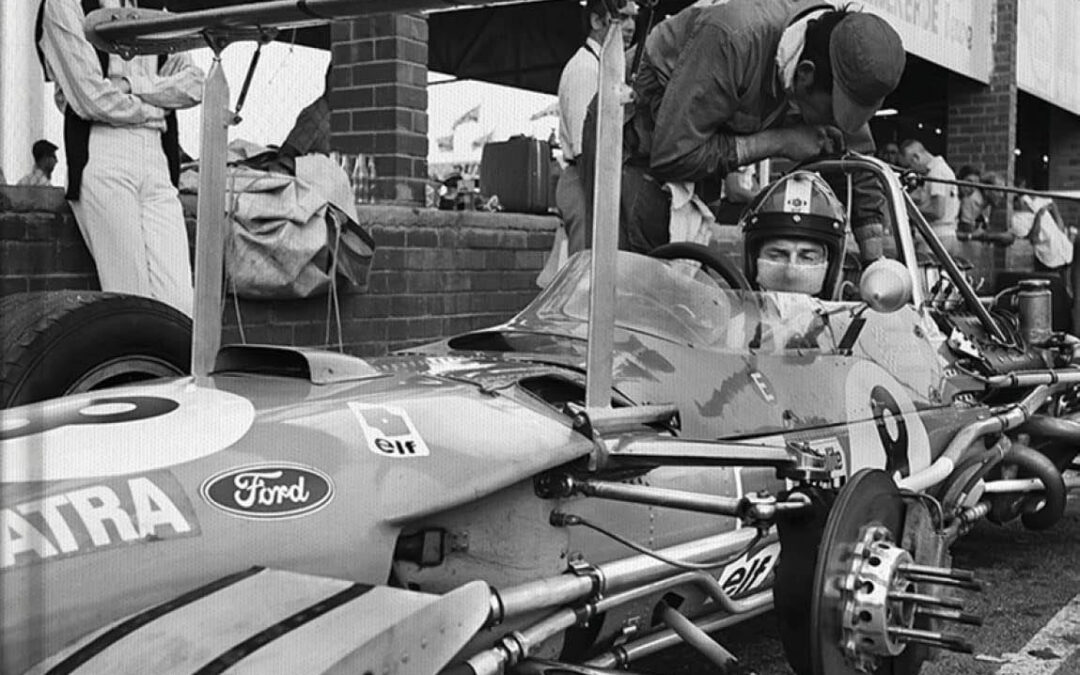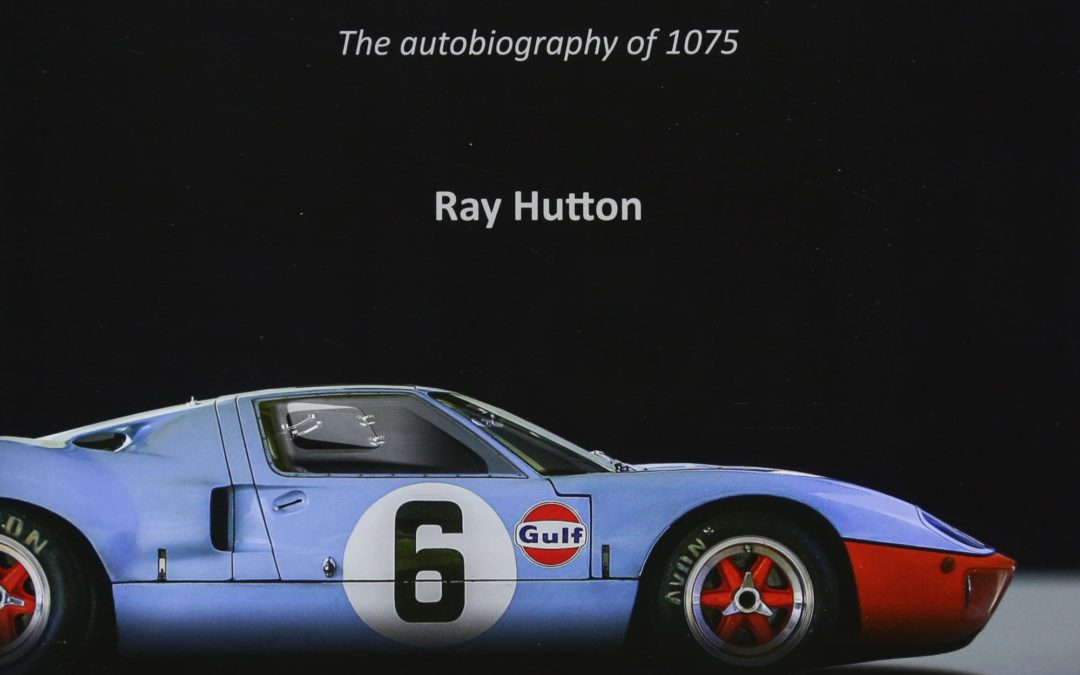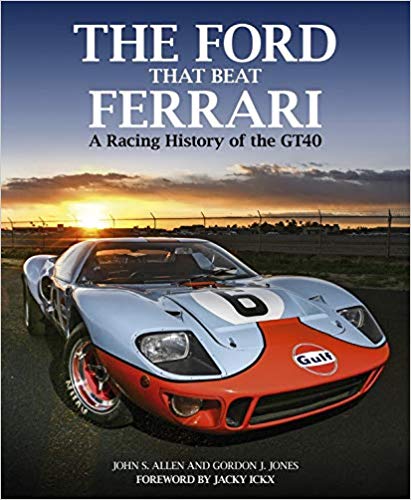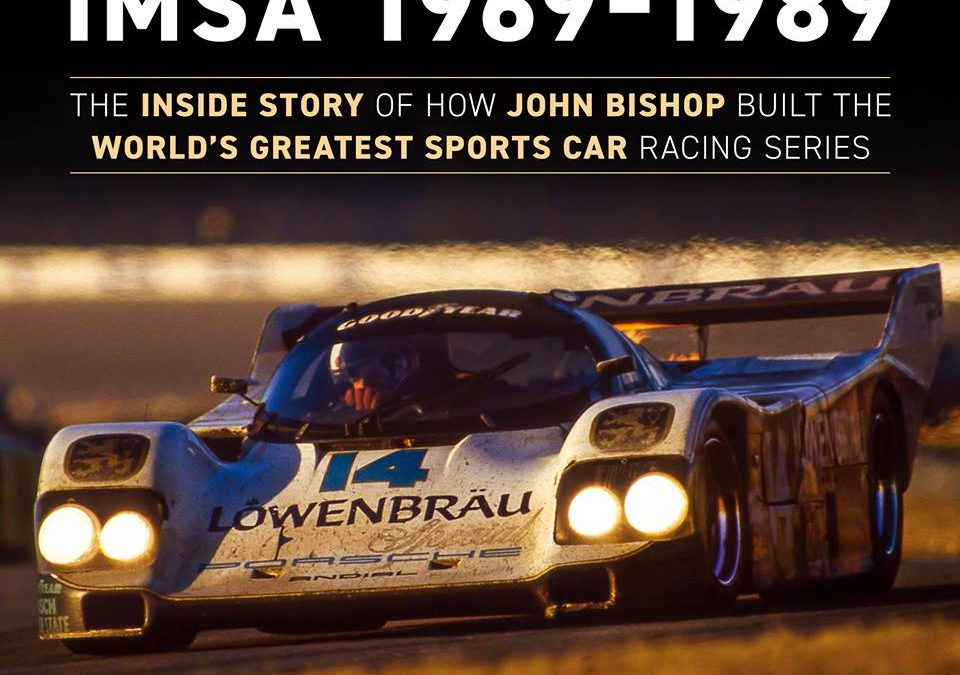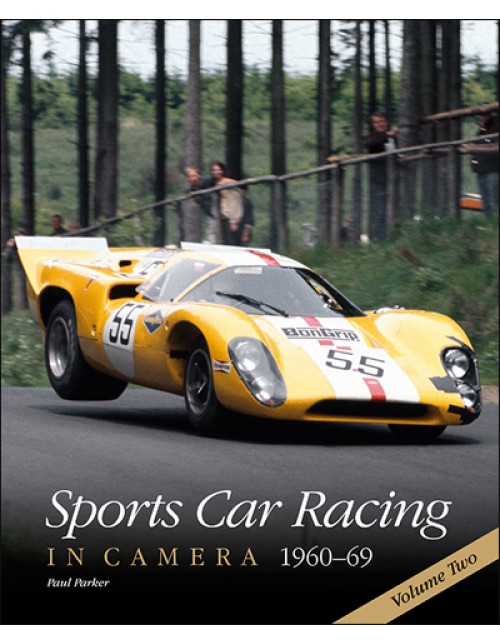
The acclaimed In Camera series returns to take a further look at sports-car racing in the 1960s. This beautifully illustrated second volume reveals the reality and hazards of period racing but also its magnificence. Here are the machines, their intrepid drivers and the many and varied circuits, some of them still public roads, all brought to life through meticulously researched photographs and the author’s renowned commentary. Sports Car Racing in Camera, 1960-69, Volume Two will appeal to all motor racing enthusiasts and especially to collectors of this impressive series.
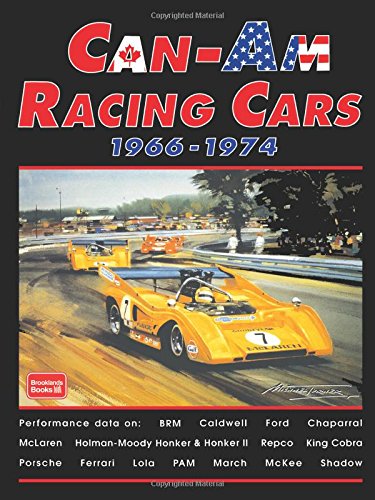
This Can-Am book takes a more detailed look at the wide variety of cars that contested the championship. In chronological order and rising in levels of performance, the machines examined range from the early Lola T70 to the incredible 1100 horsepower, 240mph Porsche 917 that swept all before it in the penultimate year of the Can-Am. McLaren cars dominated the series throughout its nine seasons and are also featured here extensively, but there are many other constructors represented, some less well known than others. Ferrari, Ford and Chaparral will be familiar to most enthusiasts, but how many recall that Brm built a Can-Am contender? Likewise, there was the ill fated Holman-Moody Honker Ii that thwarted even the undoubted ability of the great Mario Andretti to make it competitive and valiant attempts by McKee, Caldwell and the rest to build race winning cars. Aerodynamic innovation was also a major part of the typical Can-Am car, whether in the form of the wild looking Chaparral with its flipper rear wing or the air brakes tried on the Ferrari 612P, and these ideas (and many others) came under the microscope of the magazines of the day. The freedom of the Can-Am regulations gave rise to some truly unique vehicles that would dramatically influence the shape and style of motor racing around the world, long after the championship itself had passed into history. In these pages you’ll find track tests by well known drivers, comments from ground breaking designers like Bruce McLaren and inside information about the technicalities of the Can-Am have all been collated together to give a comprehensive contemporary overview of what went into producing those awesome Group 7 cars. This edition will be great reading for all enthusiasts of this exciting and legendary period of motorsport.
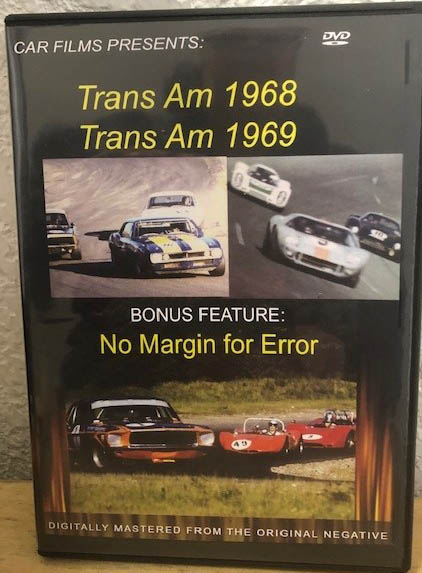
TRANS AM 1968 – 1969
1968 was largely dominated by Mark Donohue driving for Roger Penske. Penske campaigned Camaros through 1969 when he signed with American Motors to race the Javelin in 1970 and 1971. Donohue would chalk up 20 race victories between 1967 and 1970 and three unofficial drivers championships, the third achieved in 1971.
The 1970 Trans Am series is regarded by most racing historians as the high water mark of American road racing. Every “Pony Car” manufacturer was represented with a factory team and top driving talent. Chevrolet had the Chaparral Camaro Z28 team with Jim Hall, Ed Leslie and Vic Elford. Ford’s Bud Moore 302 Boss Mustangs were driven by Parnelli Jones and George Follmer. For Plymouth, the All American Racing Cudas were handled by Dan Gurney and Swede Savage. Sam Posey and occasionally Tony Adamowicz drove Ray Caldwell’s Autodynamics Challenger TA. Jerry Titus had the Pontiac Trans Am. Roger Penske’s Sonoco AMC Javelin team shared Mark Donohue and Peter Revson. The Mercury Cougars were driven by Charlie Rainville, Bruce Jennings and three other drivers in the two races of the 1968 season.
NO MARGIN FOR ERROR
In this 1968 Ford promo film you see why there is “No margin for error” to win. Mustang,(Shelby team, Jerry Titus) and Camaro (Mark Donohue) face off for championship points.
64 cars in 4 categories for the 24 hours of Daytona. Independent Ford GT-40,Porsche long-tail prototypes. Cale Yarborough at Daytona driving Mercury NASCAR, unbelievable ending of the race at 200 MPH.
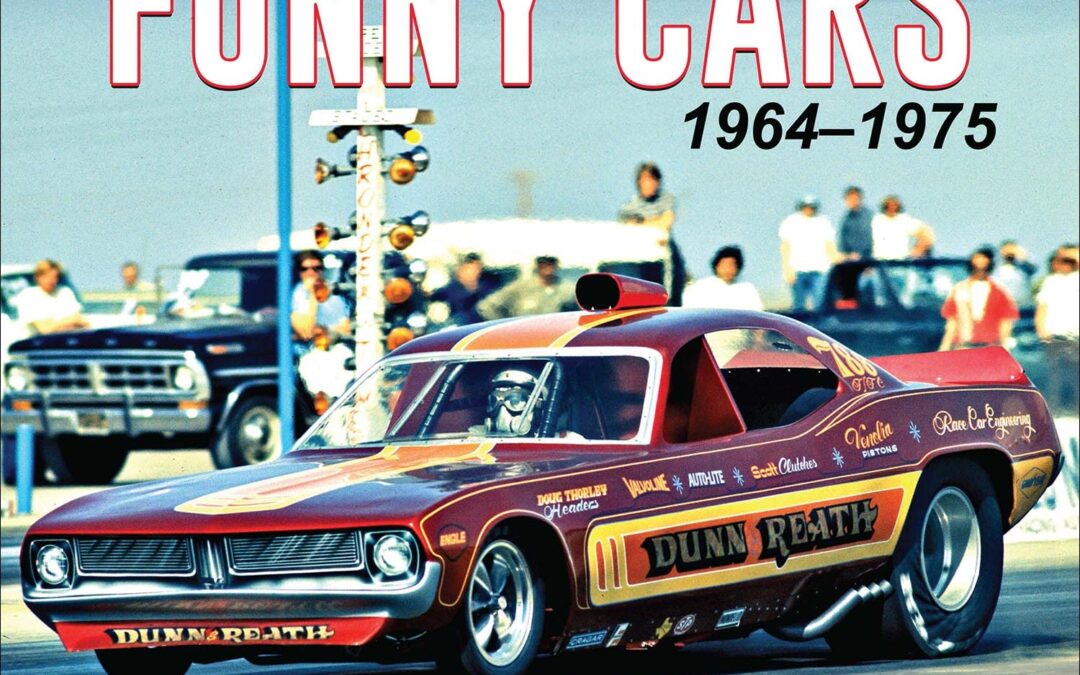
Blast through the evolving early years of Funny Car drag racing when doorslammers morphed into flip-top rail monsters. The era features historic mounts from Arnie “the Farmer” Beswick, Al “the Flying Dutchman” Vanderwoude, “Jungle” Jim Liberman, Don “the Snake” Prudhomme, and many more!
The metamorphosis from doorslammers to fiberglass flip-top dragsters wasn’t ever a cut and dry plan. As drag racers pushed the envelope for more speed, a series of innovations quickly evolved and refined the genre.
Funny Cars cut their teeth in the A/Factory Experimental (A/FX) and Experimental Stock (X/S) classes in 1964 with the 2-percent Mopars that looked funny with their axles moved forward. However, it was Jack Chrisman’s supercharged, nitro-fueled 427 Supercharged Factory Experimental (S/FX) Comet Caliente that trailblazed the class on which the NHRA turned its back and the AHRA fully accepted. Showmanship became the draw in the dawn of Funny Car with half-track burnouts and flame-throwing headers that packed fans five deep at the fence.
By 1969, the NHRA had no choice but to create a class for these nitro-breathing, flip-top-sporting rail bruisers, indoctrinating the Funny Car (F/C) class at the Winternationals with 40 cars vying for 16 places in the field. The rest, as they say, is history!
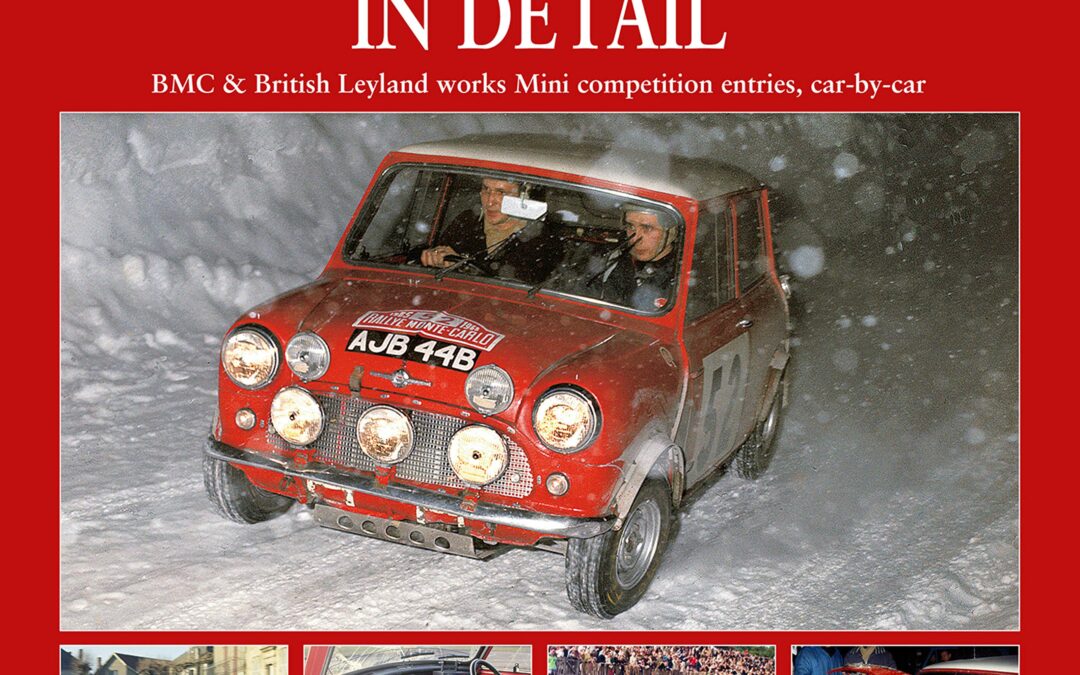
The works Minis had a long and distinguished competition history between 1959 and 1970, when British Leyland bosses closed the Abingdon Competition Department. The car started its competition career chasing class awards with the diminutive 850cc Mini, but once race car designer John Cooper persuaded BMC that they should build a hot version, the Mini Cooper was born and things moved up a gear.
With the introduction of the Mini Cooper S, the car soon became a world beater. Winning the 1964 Monte Carlo Rally in the hands of Paddy Hopkirk was a watershed moment which the Abingdon team repeated three times. During that 11-year period, 77 works Minis were built, competing in more than 300 events, most of them international rallies. The 1969 season, when the works Minis went racing, is also covered, along with the rallycross events.
Works Minis in Detail covers each one of those 77 cars which, in their distinctive red and white paintwork, were a force be reckoned with wherever they competed. Build details of every car are provided, drawn from factory build sheets, with information also on when cars were reshelled and identities swapped. The details of the events entered and the drivers are the result of analysing hundreds of contemporary race and rally reports.
The result is the most in-depth study of the works Minis ever published, made possible by years of research by Robert Young, a lifelong Mini enthusiast. As the Mini Cooper Register’s ex-works registrar, club chairman and for many years archivist, he is well placed to write with authority. A proud owner himself, he has intimate knowledge of the little red cars.
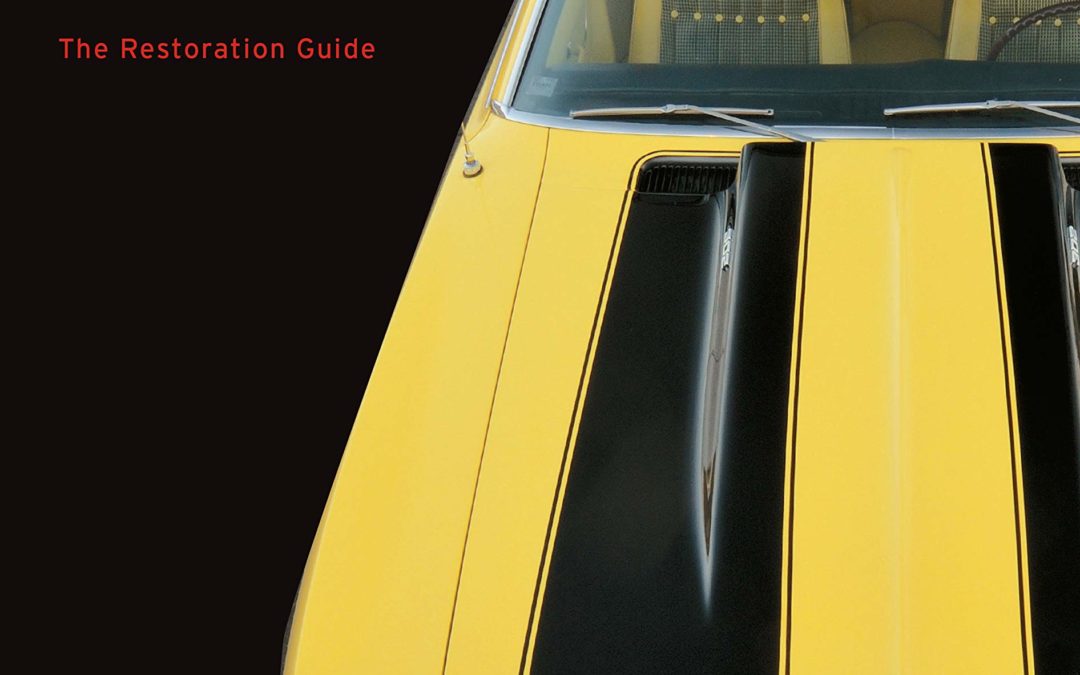
Factory-correct cars will always be the most valuable cars on the market. Original Chevrolet Camaro 1967-1969 tells you exactly which parts, accessories, finishes, fabrics, and colors you must have to restore your Camaro to its factory-original condition—or exactly what to look for when shopping for a restored Camaro.
Some 250 color images detail Chevy’s major performance packages of the period—the SS, RS and Z/28—while exhaustively detailing engines, interiors, and bodies. Of equal importance, muscle-car authority Jason Scott provides factory records, comprehensive specifications, detailed parts lists and codes, and period literature to offer the definitive guide to originality.
Chevrolet’s Camaro was introduced in 1967 on the heels of Ford’s best-selling Mustang. It quickly established itself as the go-to option for muscle-car customers wanting a more aggressive pony car.
During its first generation from 1967 to 1969, GM offered option packages to satisfy all tastes, from six-cylinders grocery-getters to agile small-block cars to big-block monsters ready for drag racing straight off the showroom floor. Today, these first-generation Camaros are some of the most valuable cars in the collectible muscle-car market.
This is a must-have volume for any enthusiast shopping for a first-generation Camaro or about to undertake a restoration project.
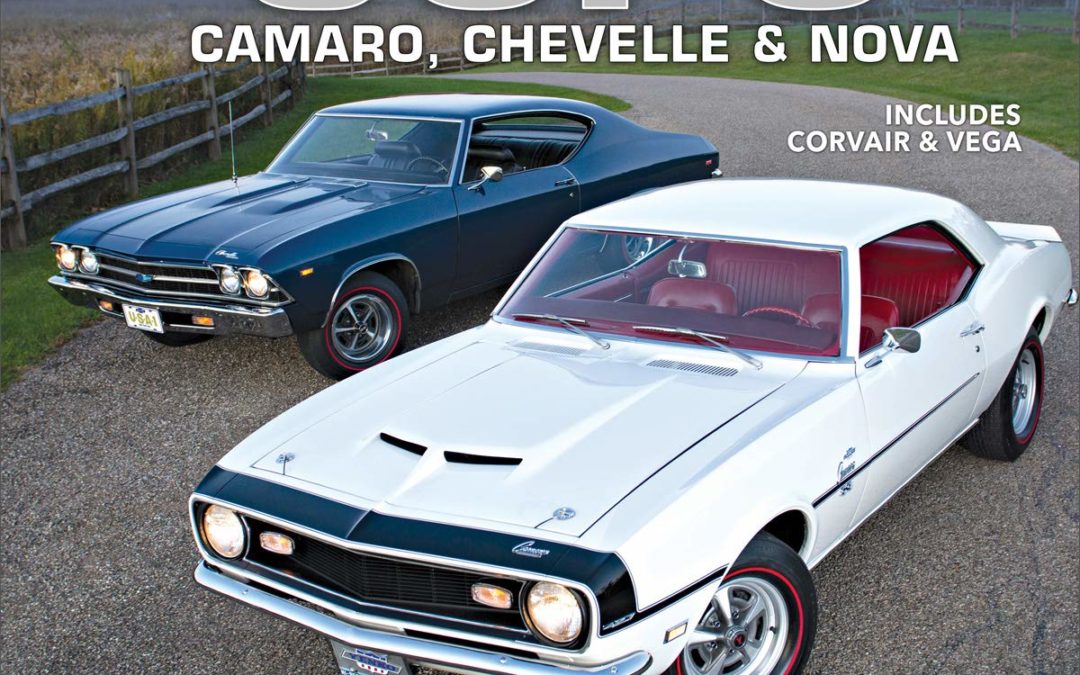
The COPO Camaros, Chevelles, and Novas of the 1960s and early 1970s were the ultimate high-performance GM muscle cars. While few knew about this back channel program at the time, it is now recognized as the origin of GM’s top muscle cars. Dedicated Chevy racers and car owners were determined to compete head-to-head with Mopar and Ford at the racetrack and on the street. But in order to do so, they needed to circumvent the corporate ban on racing and resolve the restriction of 400-ci engines in intermediate vehicles. Don Yenko and some other creative individuals recognized the loophole in the COPO (Central Office Production Order) system at General Motors. The COPO program was designated for fleet vehicles such as taxicabs, but at the peak of the muscle car wars it was used to build the ultimate high-performance Chevy muscle cars.
Some horrific on-track accidents compelled General Motors to drop out of racing, yet GM did not want to allow Chrysler and Ford to steal the glory on Sundays while they stood on the sidelines. As a result, GM inconspicuously ran the Chevy racing and high-performance program through back channels, and COPO was integral part of the program.
Don Yenko became the COPO muscle car program chief architect and champion. He ordered the Corvair through the COPO program and created the Corvair Stinger to mount a SCCA road race campaign. From these humble beginnings, the road map for creating the ultimate Camaros, Chevelles, and Novas was established. Factory Camaro V-8s came equipped with the 350 small-block or 396 big-block, which had to compete with the Mustang Cobra Jets and Mopar Wedge and Hemi cars. In response, building the big-block Camaro through the COPO program was devised. At the factory, Camaros were fitted with the 396 engines and shipped to dealers where the 427s were installed in the cars. From 1967 to 1969, the factory and dealers installed eight different 427 engines, including the all aluminum ZL1 427. Later on, others used the road map to build COPO Novas and Chevelles to similar spec, with similar results. The COPO performance car program did not end with these muscle cars. Yenko even ordered several hundred Vegas through the COPO program, so they could be fitted with turbochargers and raced in SCCA competition.
Chevy muscle car aficionado and author Matt Avery retraces the history of the COPO program and the creation of these premier muscle cars. He has scoured archives and tracked down owners and personnel involved in the program to deliver a comprehensive story and complete guide to the COPO cars. The COPO muscle car and racing program produced a storied and remarkable journey, and author Matt Avery captures all these facets in this entertaining and revealing history.
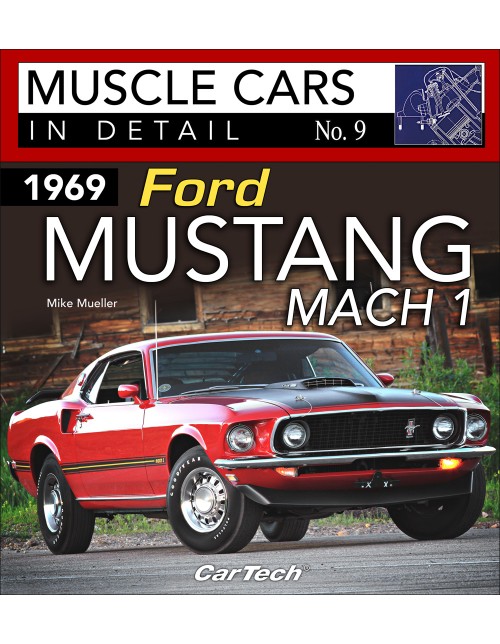
By the time the 1969 model year rolled around, it was well established that muscle cars were fast and plentiful. Every manufacturer had at least one corner of the showroom where the “go fast” guys could congregate and discuss the merits and time slips of the latest performance offerings. Competition being what it was, the manufacturers were looking for ways to entice potential buyers to choose their product over ever-increasing offerings from the competition. Some manufacturers tried to accomplish this with affordable prices, some tried fancy marketing schemes, and some created a look and a style that screamed “performance” even when standing still.
The 1969 Mach I was Ford’s attempt to create a package and a style to match the performance of its recently released and very potent 428-ci Cobra Jet engine package. Displacing the still-available but more conservative GT trim, the Mach I included unique and innovative graphics and mechanical innovations including shaker hood scoops, dual racing mirrors, deluxe interiors, competition suspension, dual chrome exhaust tips, and blacked-out hoods. The result was a wildly popular model that sold more than 70,000 units, compared to slightly more than 5,000 GT models for the year.
Each volume in the In Detail Series provides an introduction and historical overview, an explanation of the design and concepts involved in creating the car, a look at marketing and promotion, an in-depth study of all hardware and available options, and an examination of where the car is on the market today. Also included are paint and option codes, VIN and build tag decoders, as well as production numbers.
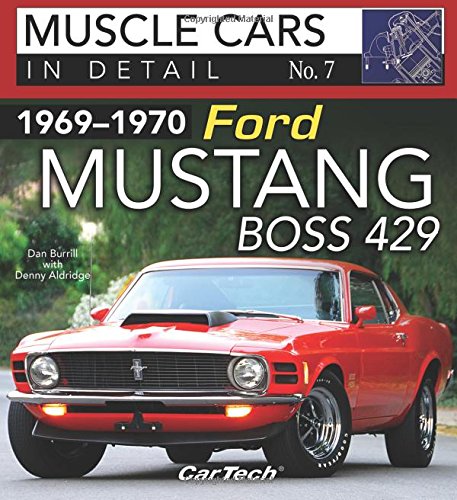
Not to be outdone by Chrysler, Ford had to build and field its own race-duty big-block to compete with the 426 Hemi in drag and stock car racing. In competition trim, the Boss 429 powered Ford and Mercury stock cars to victory in NASCAR and the Mustang to many wins in drag racing. With this exclusive racing pedigree, the Boss 429 is among the most valuable and rare Mustangs ever built.
The project was the brainchild of Bunkie Knudsen, noted stylist Larry Shinoda, and other talented Ford personnel. The semi-hemi Boss 429 was so large, it couldn’t fit in the small Mustang, so Kar-Kraft, a specialty car builder, had to shoehorn the engine into the compact Mustang fastback. Author Dan Burrill collaborated with Boss 429 expert Denny Aldridge to give you the straight story on the car, its special equipment, 429 engine, 4-speed Toploader transmission, interior appointments, paint codes, and options. Also featured is the exciting story of developing this monumental engine, engineering the components and parts to fit the engine and chassis, and assembling the cars.
Each volume in the In Detail Series provides an introduction and historical overview, an explanation of the design and concepts involved in creating the car, a look at marketing and promotion, an in-depth study of all hardware and available options, and an examination of where the car is on the market today. Also included are paint and option codes, VIN and build tag decoders, as well as production numbers.

Since the early days or racing, Chrysler, Dodge, and Plymouth have dominated drag strips and race tracks. During 1955 alone, Chrysler 300s won 37 major stock car races and clinched both the NASCAR and AAA stock car championships.
Although the impressive engine options of 1950s consistently out-performed the competition, they were a mere opening act for the extremes of performance that would be unleashed throughout the 1960s–the golden era of drag racing and factory super-performance cars.
Maximum Performance: Mopar Super Stock Drag Racing 1962-1969 details Chrysler’s amazing dominance in this era. Its drivers were among drag racing’s first paid professional racers, and this book covers the complete story of Mopar drag racing accompanied by historical imagery as well as contemporary photos. This is the real story behind Super Stock and Factory Experimental drag racing as told the people who lived it!
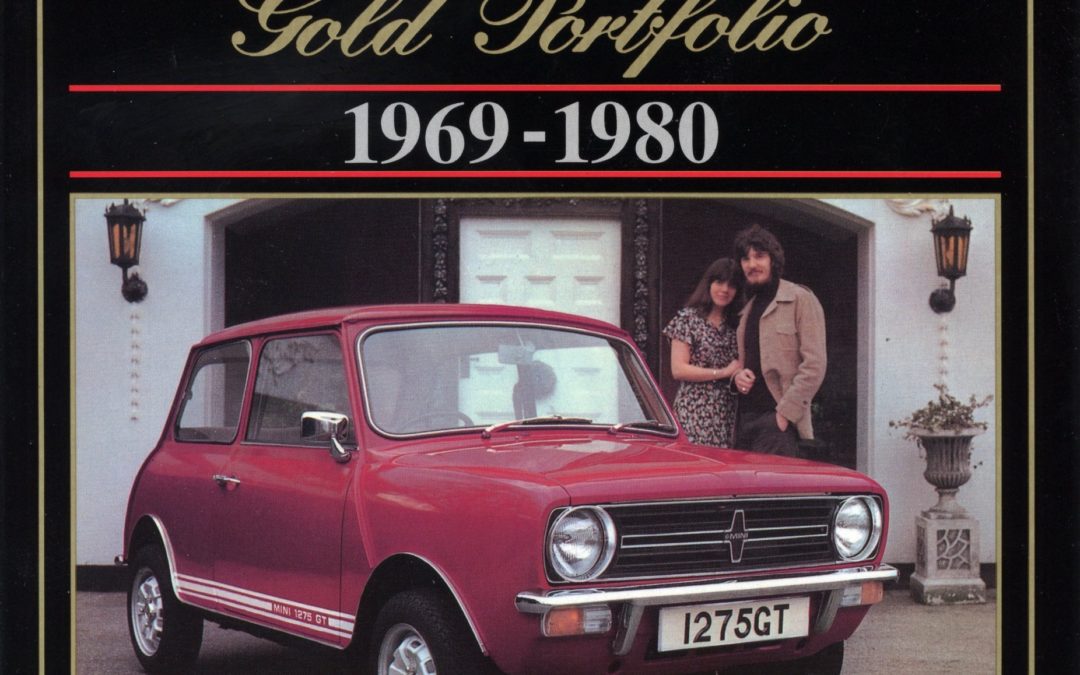
The change to the new “face” of the Mini in 1969 had removed some of the charm of the original car. But the Mini did need something to keep it looking fresh after 10 years in production. However, the customers liked it the way it was and the original style was reinstated at the beginning of the 1980s. Here is the story of the Mini in the 1970s by way of contemporary road and comparison tests, specification and technical data, new model introductions, racing, rallying, and conversions. Models covered include: Clubman, 1275GT, 1000, de Ville, Estate, Special Tuning Cooper S, Stage One 1275 GT, 1100, 1100 Estate, Cooper S Mk III, GTS, Innocenti, 1100 de Luxe, S.

The first entirely new Porsche in 16 years. The body of the 911 was completely new yet unmistakably Porsche. It came with disc brakes all round and a 5-speed manual gearbox, the engine being an air-cooled flat 6. As a result of racing development the 911S was introduced in 1966 with a net power of 160bhp, Weber carburetors and a top speed of 137mph. American emission laws drove Porsche to develop a mechanical fuel injection system which also gave more power, they called the model 911E. This is a book of contemporary road tests, new model introductions, development history, technical & specification data, long-term tests, driver’s impressions. Models covered include:- 911, 911S, 911L, 911E, Sportomatic, Targa.

This book is a detailed account of the most charismatic period of Ferrari sports car racing, from the introduction of Prototype racing for 1963 to the withdrawal of Maranello from two-seater racing at the end of 1973 to concentrate on Formula 1. The great sports racing cars of this era have a strong enthusiast following, particularly those of the Prancing Horse, which was competing primarily against the Ford GT40 and the Porsche 917.- The years 1964-67 when Ford Challenged the supremacy of Ferrari, at LeMans in particular- Battling with Porsche from 1969 to the end of 1971 and coming out worse- The switch to 3-litre sports car racing for 1972 and Ferrari’s domination of the category against opposition from Matra and Alfa Romeo- Ferrari’s defeat by the French v12s in 1973 and Maranello’s withdrawal from the class of racing- The thinking of Enzo Ferrari and his engineers- The relationships of private owners and the factory- Interviews with owners and entrants, plus correspondence with Ferrari- Specifications, works drivers, and international race results.
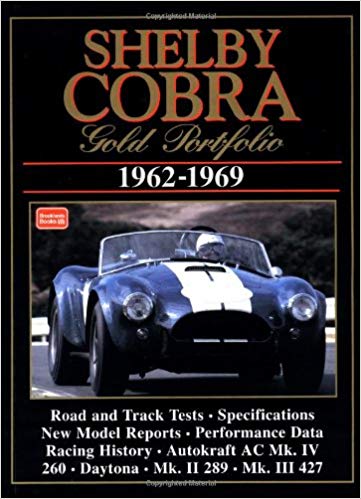
Gold Portfolio signifies a premium edition in the Brooklands series. Packed with even more articles, photos, technical information, road tests, buying information and other great features on your favorite car.
Detailed information includes:
• Road and Track Tests
• Specifications
• New Model Reports
• Performance Data
• Racing History
• Autokraft AC Mk. IV
• 260
• Daytona
• Mk.II 289
• Mk.III 427
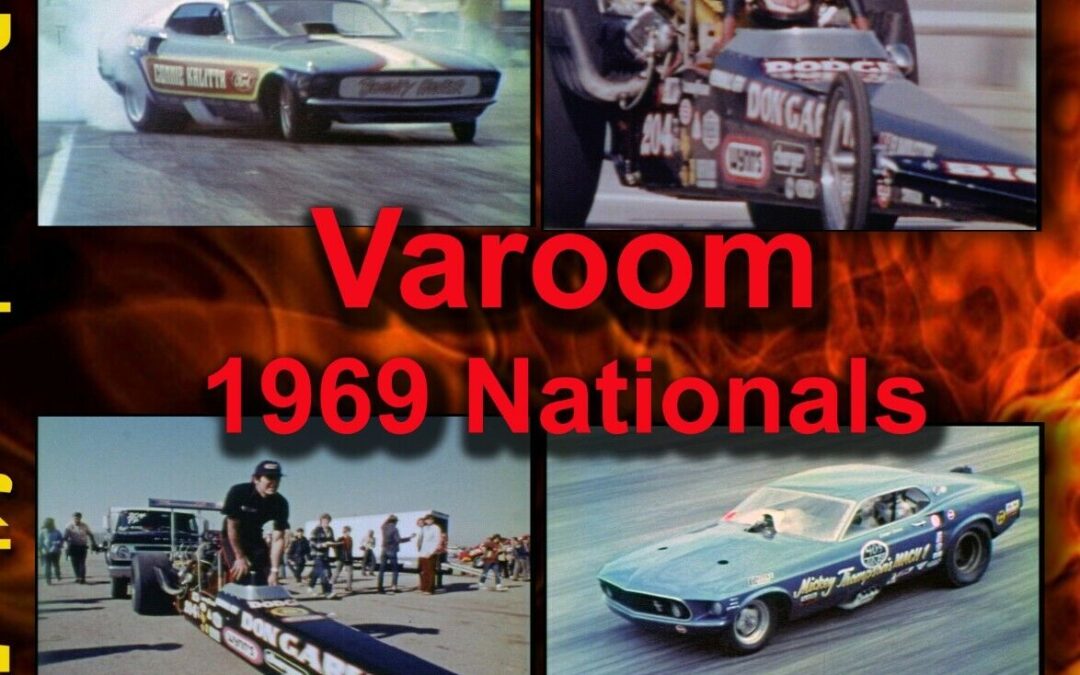
THE TIME MACHINES
Originally produced by Fram Corp. 30min
This film is shot with very advanced camera angles and techniques not usually seen in documentaries of this era– in-car cameras and slow-motion photography, incredible!
Labor day Indianapolis Raceway Park 1969
This film starts with an interview with Charley Alan and also Dick Landy super stock class, Don Prudhomme, Don Garlets.
Cars seen in first segment are Ron Ellis, Bounty Hunter of Connie Kalitta-70 Mustang, Mickey Thompson’s Mach 1, Big John Mazmanian.
Ed Pink plugs Fram Filter.
Unbelievable footage of 2 rails burning out, shot at 1000 frames per second. You can see every pulse of the engine as it strains to launch the car.
Ronny Sox in a Barracuda wins when Dave Renn blows a drive shaft.
Also a segment on Super eliminators and Gassers.
VAROOM 30min
The Original sound track of this film makes it a time capsule of 70’s Drag racing, when it was a family sport.
Great interview with Shirley Muldowney (The boys were all with me until I started winning.)
Don Garlits (I am a target like the gun fighters of the old west.) Don speaks of the origins of drag racing back on old abandoned airport runways. This is followed by a great segment showing ’50s drag racing old cars and hotrods of the era, complete with really corny music! Jet car runs 280mph.
Don Schumacher, Soapy Sales, Rat Trap.
Shot at the Pomona Winter National. This films closes with one of the most outrageous slow motion segments I have seen. Shot on 16mm, the slow motion on this film is excellent!! Not like the video slow-mo you see today.
The last Drags at LACR/ Dry Lakes 25min
A mini documentary about the last drag race at Los Angeles County Raceway. Also in this video is an outing with the boys from the Los Angeles Shelby Club as they go out to the dry Lakes to see what it’s all about–great footage of high-speed runs.
